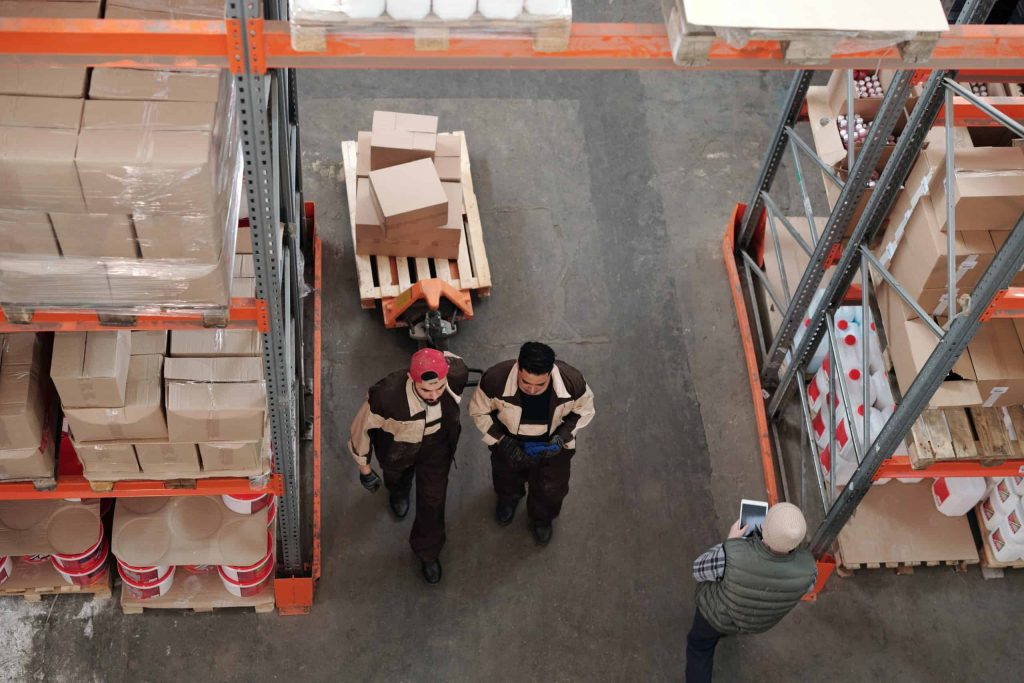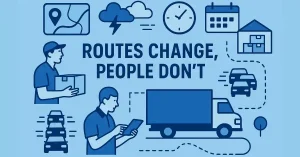In today’s fast-paced consumer landscape, last-mile delivery solutions are crucial to meeting customer demands, and reefer fuel delivery plays a vital role in ensuring the safe and efficient transport of temperature-sensitive goods. Explore how these delivery services contribute to meeting the demands of today’s consumers by visiting their website. To navigate this terrain successfully, companies are increasingly turning to IT solutions for transportation & logistics. In this comprehensive , we explore the evolving landscape of last-mile delivery and how IT solutions are revolutionizing the way businesses meet the demands of today’s consumers.
Understanding the Importance of Last-Mile Delivery
The last mile is the most crucial and cost-intensive part of the supply chain. It’s the point at which a customer’s experience with a product or service is ultimately defined. A seamless, efficient last-mile delivery can enhance customer satisfaction, build brand loyalty, and drive repeat business. Conversely, a poor last-mile experience can result in customer dissatisfaction and lost sales.
Challenges in Last-Mile Delivery
Meeting the demands of today’s consumers in the last mile is no small feat. Several challenges complicate the process, including:
Traffic Congestion: Urban areas often suffer from heavy traffic, which can lead to delays and increased costs for delivery companies.
Address Accuracy: Incorrect or imprecise addresses can lead to delivery errors and additional delivery attempts.
Delivery Windows: Consumers increasingly expect precise reefer fuel delivery time windows, requiring companies to provide accurate tracking and timely updates.
Parcel Theft: Porch piracy is a growing concern, with thieves targeting unattended packages left at customers’ doorsteps.
Environmental Concerns: Consumers are becoming more environmentally conscious, demanding eco-friendly delivery options.
The Role of IT Solutions in Last-Mile Delivery
IT solutions for transportation & logistics play a pivotal role in addressing these challenges and optimizing last-mile delivery. Here are some key ways in which technology is transforming this crucial phase of the supply chain:
1. Route Optimization: Advanced algorithms and machine learning are used to optimize delivery routes, reducing mileage and fuel consumption while ensuring timely deliveries. These algorithms take into account various factors, including real-time traffic data, weather conditions, and package prioritization.
2. Real-Time Tracking: GPS technology and mobile apps enable customers to track their deliveries in real time, providing transparency and peace of mind. Customers receive notifications about the estimated time of arrival, allowing them to plan their day more efficiently.
3. Delivery Drones and Robots: Some companies are exploring the use of drones and autonomous robots for last-mile delivery in specific environments, such as urban areas. These technologies promise faster and more efficient deliveries, especially in congested city centers.
4. Data Analytics: Big data analytics help companies analyze customer preferences, delivery patterns, and other data to improve decision-making and customer service. For instance, data can reveal which delivery times are most convenient for customers and help optimize delivery windows accordingly.
5. Warehouse Automation: Automated warehouses and fulfillment centers use robotics and AI to expedite order picking and packing. These systems can significantly reduce the time it takes to prepare packages for delivery, leading to faster and more accurate shipments.
6. Alternative Delivery Options: Companies are exploring alternative delivery methods, such as lockers, pickup points, and even in-car delivery, to increase convenience and security. These options provide flexibility to customers who may not be available at home during standard delivery hours.
Innovations in Last-Mile Delivery
Several innovative approaches to last-mile delivery are gaining traction:
1. Crowdsourced Delivery: Companies are tapping into gig economy workers and crowdsourcing platforms to expand their delivery fleets during peak periods. This flexible approach allows businesses to quickly scale their operations to meet surges in demand.
2. Electric and Sustainable Vehicles: Electric delivery vans and bicycles are becoming increasingly popular, reducing the carbon footprint of last-mile delivery. Some companies are even experimenting with hydrogen reefer fuel delivery cell vehicles for long-range eco-friendly deliveries.
3. Micro-Fulfillment Centers: These smaller-scale fulfillment centers located closer to urban areas enable quicker and more efficient deliveries. By decentralizing inventory, companies can reduce the distance between products and customers, resulting in faster delivery times.
4. Smart Packaging: Packages equipped with sensors and RFID technology can provide real-time data on the condition and location of products. This not only ensures the safe arrival of goods but also enables proactive measures in case of damage or tampering during transit.
5. Blockchain for Authentication: Blockchain can be used to authenticate products and reduce the risk of counterfeit goods entering the supply chain. By creating an immutable record of a product’s journey from manufacturer to customer, blockchain enhances transparency and trust.
The Future of Last-Mile Delivery
As technology continues to advance, the future of last-mile delivery looks promising. Innovations like autonomous delivery vehicles, predictive analytics, and even underground delivery networks are on the horizon. Additionally, regulatory and environmental pressures will likely drive further improvements in sustainability and efficiency.
1. Autonomous Delivery Vehicles: Self-driving cars and drones are poised to revolutionize last-mile delivery. Companies like Amazon and Google are already investing heavily in autonomous delivery technology. These vehicles can operate 24/7, reducing delivery times and costs.
2. Predictive Analytics: Advanced data analytics and machine learning will enable companies to predict customer preferences and demand patterns more accurately. This will allow for better inventory management and optimized delivery routes.
3. Underground Delivery Networks: In densely populated urban areas, underground delivery networks could alleviate traffic congestion and offer a more efficient means of last-mile delivery. These networks could utilize tunnels and automated transport systems to move goods swiftly.
4. Regulatory Changes: Governments are likely to introduce new regulations aimed at improving the safety and efficiency of last-mile delivery. This may include standards for autonomous vehicles, restrictions on delivery hours, and incentives for eco-friendly delivery methods.
5. Enhanced Sustainability: Environmental concerns will continue to drive innovation in sustainable last-mile delivery solutions. This includes the adoption of electric and hydrogen-powered vehicles, as well as the development of more eco-friendly packaging materials.
Conclusion
The last mile of delivery is a critical component of the supply chain, and meeting the demands of today’s consumers requires innovation and adaptation. IT solutions for transportation & logistics are at the forefront of this transformation, enabling companies to provide faster, more efficient, and more convenient last-mile delivery experiences. As technology continues to evolve, businesses that invest in IT solutions for last-mile delivery will be well-positioned to thrive in an increasingly competitive and consumer-focused market.
The future of last-mile delivery is exciting, with autonomous vehicles, predictive analytics, and underground networks set to redefine how products reach consumers. By embracing these technological advancements and continuing to prioritize sustainability and customer satisfaction, businesses can stay ahead in the ever-evolving landscape of last-mile delivery.



